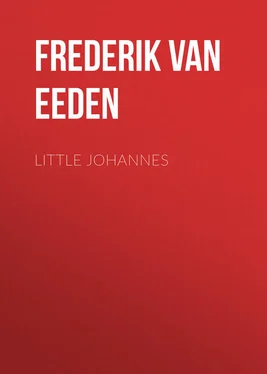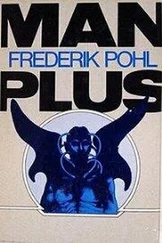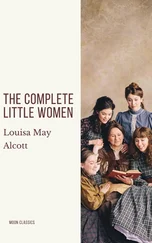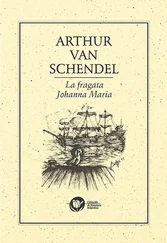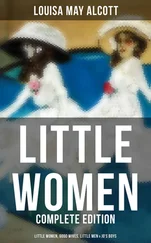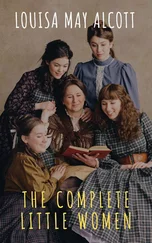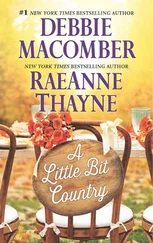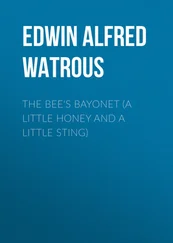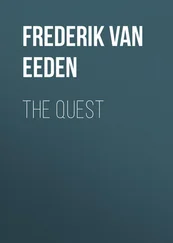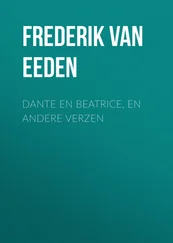Frederik Eeden - Little Johannes
Здесь есть возможность читать онлайн «Frederik Eeden - Little Johannes» — ознакомительный отрывок электронной книги совершенно бесплатно, а после прочтения отрывка купить полную версию. В некоторых случаях можно слушать аудио, скачать через торрент в формате fb2 и присутствует краткое содержание. Жанр: История, foreign_antique, foreign_prose, на английском языке. Описание произведения, (предисловие) а так же отзывы посетителей доступны на портале библиотеки ЛибКат.
- Название:Little Johannes
- Автор:
- Жанр:
- Год:неизвестен
- ISBN:нет данных
- Рейтинг книги:3 / 5. Голосов: 1
-
Избранное:Добавить в избранное
- Отзывы:
-
Ваша оценка:
- 60
- 1
- 2
- 3
- 4
- 5
Little Johannes: краткое содержание, описание и аннотация
Предлагаем к чтению аннотацию, описание, краткое содержание или предисловие (зависит от того, что написал сам автор книги «Little Johannes»). Если вы не нашли необходимую информацию о книге — напишите в комментариях, мы постараемся отыскать её.
Little Johannes — читать онлайн ознакомительный отрывок
Ниже представлен текст книги, разбитый по страницам. Система сохранения места последней прочитанной страницы, позволяет с удобством читать онлайн бесплатно книгу «Little Johannes», без необходимости каждый раз заново искать на чём Вы остановились. Поставьте закладку, и сможете в любой момент перейти на страницу, на которой закончили чтение.
Интервал:
Закладка:
Frederik van Eeden
Little Johannes
INTRODUCTION
LITERARY FAIRY TALES
The Märchen or child's story, is a form of literature primevally old, but with infinite capacity of renewing its youth. Old wives' fables, tales about a lad and a lass, and a cruel step-mother, about three adventurous brothers, about friendly or enchanted beasts, about magical weapons and rings, about giants and cannibals, are the most ancient form of romantic fiction. The civilised peoples have elaborated these childlike legends into the chief romantic myths, as of the Ship Argo, and the sagas of Heracles and Odysseus. Uncivilised races, Ojibbeways, Eskimo, Samoans, retain the old wives' fables in a form far less cultivated, – probably far nearer the originals. European peasants keep them in shapes more akin to the savage than to the Greek forms, and, finally, men of letters have adopted the genre from popular narrative, as they have also adopted the Fable.
Little Johannes , here translated from the Dutch of Dr. Frederik van Eeden, is the latest of these essays, in which the man's fancy consciously plays with the data and the forms of the child's imagination. It is not my purpose here to criticise Little Johannes, an Allegory of a Poet's Soul , nor to try to forestall the reader's own conclusions. One prefers rather to glance at the history of the Fairy Tale in modern literature.
It might, of course, be said with truth that the Odyssey, and parts of most of the world's Epics are literary expansions of the Märchen . But these, we may be confident, were not made of set literary purpose. Neither Homer, nor any poet of the French Chansons de Geste , cried, 'Here is a good plot in a child's legend, let me amplify and ennoble it.' The real process was probably this: adventures that from time immemorial had been attributed to the vague heroes of Märchen gradually clustered round some half divine or heroic name, as of Heracles or Odysseus, won a way into national traditions, and were finally sung of by some heroic poet. This slow evolution of romance is all unlike what occurs when a poet chooses some wild-flower of popular lore, and cultivates it in his garden, when La Fontaine, for example, selects the Fable; when the anecdote is developed into the fabliau or the conte , when Apuleius makes prize of Cupid and Psyche (a Märchen of world-wide renown), when Fénelon moralises the fairy tale, or Madame d'Aulnoy touches it with courtly wit and happy humour, or when Thackeray burlesques it, with a kindly mockery, or when Dr. Frederik van Eeden, or Dr. Macdonald, allegorises the nursery narratives. To moralise the tale in a very ancient fashion: Indian literature was busy to this end in the Buddhist Jatakas or Birth-stories, and in the Ocean of the Stream of Stories . Mediæval preachers employed old tales as texts and as illustrations of religious and moral precepts. But the ancient popular fairy tale, the salt of primitive fancy, the drop of the water of the Fountain of Youth in modern fiction, began its great invasion of literature in France, and in the reign of Louis XIV. When the survivors of the Précieuses , when the literary court ladies were some deal weary of madrigals, maxims, bouts-rimés , 'portraits,' and their other graceful bookish toys, they took to telling each other fairy tales. 1 1 Part of what follows I have already stated in a reprint of Perrault's Popular Tales , Clarendon Press, Oxford, 1888.
On August 6, 1676, Madame de Sévigné tells her daughter that at Versailles the ladies mitonnent, or narrate fairy tales, concerning the Green Isle, and its Princess and her lover, the Prince of Pleasure, and a flying hall of glass in which the hero and heroine make their voyages. It is not certain whether these exercises of fancy were based on memories of the Pentamerone , and other semi-literary Italian collections of Folk-Tales, or whether the witty ladies embroidered on the data of their own nurses. As early as 1691, Charles Perrault, inventing a new genre of minor literature, did some Folk-Tales into verse, and, in 1696, he began to publish his famous Sleeping Beauty , and Puss in Boots , in Moetjens's miscellany, printed at the Hague. In 1696 Mlle. L'Héritière put forth a long and highly embroidered fairy tale, Les Enchantements de l'Eloquence , in her Bizarrures Ingénieuses (Guignard), while Perrault's own collected Contes de ma Mère l'Oye were given to the world in 1697 (Barbin, Paris).
The work of Mlle. L'Héritière was thoroughly artificial, while the immortal stories of Perrault have but a few touches of conscious courtly wit, and closely adhere to the old nursery versions. Perrault, in fact, is rather the ancestor of the Grimms and the other scholarly collectors, than of the literary letters of fairy tales. The Fairy Godmothers of modern contes play quite a small part in Perrault's works (though a larger part than in purely popular narrative) compared with their rôle in Madame d'Aulnoy, and all her successors. Much more truly than la Comtesse de M – (Murat), author of Contes des Fées (1698), Madame d'Aulnoy is the true mother of the modern fairy tale, and the true Queen of the Cabinet des Fées . 2 2 In forty-one volumes, Paris, 1785-89.
To this witty lady of all work, author of Mémoires de la Cour d'Espagne , and of many novels, a mere hint from tradition was enough. From such hints she developed her stories, such as Le Mouton, Le Nain jaune, Finette Cendron, Le Bon petit Souris , and very many others. She invented the modern Court of Fairyland, with its manners, its fairies – who, once a year, take the forms of animals, its Queens, its amorous, its cruel, its good, its evil, its odious and its friendly fées ; illustrious beings, the counsellors of kings, who are now treated with religious respect, and now are propitiated with ribbons, scissors, and sweetmeats.
The Fairies are as old as the Hathors of Egypt, the Moerae who came to the birth of Meleager, the Norns of Scandinavian myth. But Madame d'Aulnoy first developed them into our familiar fées of fairy tale. Her contes are brilliant little novels, gay, satirical, full of hits at courts and kings. Yet they have won a way into true popularity: translated and condensed, they circulate as penny scrap-books, and furnish themes for pantomime. 3 3 There are complete English translations of the eighteenth century. Many of the stories have been retold by Miss M. Wright, in the Red and Blue Fairy Books .
It is from Madame d'Aulnoy that the Rose and the Ring of Thackeray derives its illustrious lineage. The banter is only an exaggeration of her charming manner. It is a pity that Sainte-Beuve, in his long gallery of portraits, found no space for Madame d'Aulnoy. The grave Fénelon follows her in his Rosimond et Braminte , by no means the worst effort of the author of Télémaque . 4 4 I am unacquainted with the date of composition of this story about a Ring more potent than that of Gyges. (It is printed in the second volume of Dialogues des Morts Paris, 1718).
From Madame d'Aulnoy, then, descend the many artificial stories of the Cabinet des Fées , and among these the very prolix novel out of which Beauty and the Beast has been condensed takes a high place. The tales of the Comte de Caylus have also humour, wit, and a pleasant invention. 5 5 From one of these tales by Caylus the author, who but recently made their acquaintance, finds that he has unconsciously plagiarised an adventure of Prince Prigio's.
Интервал:
Закладка:
Похожие книги на «Little Johannes»
Представляем Вашему вниманию похожие книги на «Little Johannes» списком для выбора. Мы отобрали схожую по названию и смыслу литературу в надежде предоставить читателям больше вариантов отыскать новые, интересные, ещё непрочитанные произведения.
Обсуждение, отзывы о книге «Little Johannes» и просто собственные мнения читателей. Оставьте ваши комментарии, напишите, что Вы думаете о произведении, его смысле или главных героях. Укажите что конкретно понравилось, а что нет, и почему Вы так считаете.
